 Kia has officially revealed its new, all-electric EV9 SUV. It is available as a six- or seven-seater, and it’ll take the crown as Kia’s all-electric flagship when it goes on sale towards the end of 2023. After its design reveal earlier this March, Kia has now confirmed specifications for its flagship EV.
Kia has officially revealed its new, all-electric EV9 SUV. It is available as a six- or seven-seater, and it’ll take the crown as Kia’s all-electric flagship when it goes on sale towards the end of 2023. After its design reveal earlier this March, Kia has now confirmed specifications for its flagship EV.
And, while it might look like a properly premium machine, Kia promises it’s still a mainstream brand. ‘I think this will stay within the DNA of the brand, but just touch upon the boundaries between premium and mainstream – those boundaries are getting more blurred,’ says vice president of brand strategy, Kumasegawa Kaoru, ‘and, obviously, these values will be trickled down into our future line-up.’
The brand has revealed images of the exterior and interior design so far, with more technical specifications expected to follow at a later date. For now, though, let’s dig into the look, feel and tech on offer.
It looks huge!
And, interestingly, extremely close to the Concept EV9 we first saw at the 2021 Los Angeles motor show. Ride n Drive understands the EV9 is around five metres in length, making it longer around 200mm longer than the Sorento SUV (Kia’s largest car before this arrived) and a similar length to a Range Rover, so its in good company.
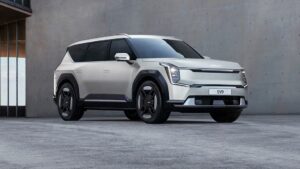 The EV9’s geometrically-inspired lines – from its triangular-shaped, deeply-flared wings and chunkily wraparound windscreen, to the “star map” LEDs and animated digital lighting patterns – add up to a new design approach. Much of which will filter down to its smaller electric cars, and fulfil Kia’s masterplan of having 14 EVs on sale by 2027.
The EV9’s geometrically-inspired lines – from its triangular-shaped, deeply-flared wings and chunkily wraparound windscreen, to the “star map” LEDs and animated digital lighting patterns – add up to a new design approach. Much of which will filter down to its smaller electric cars, and fulfil Kia’s masterplan of having 14 EVs on sale by 2027.
Former-BMW design veteran Karim Habib, who heads up Kia’s design division, cites ‘aerodynamic reasons’ as to why the EV9 has ‘slightly less ground clearance than a normal SUV’, before adding some other justifications. ‘I think that’s partly what makes the car, like the bonnet being shorter, the cabin longer and the beltline low. The beltline is definitely lower than on the concept car. In its glass-to-body proportion, it’s a bit less-classical SUV-like. That was all part of the message of this more ‘living space’ architecture.’
What about the EV9’s interior?
Up front, the EV9 sports one large 27-inch instrument panel combining a trio if slim screens underneath, which Kia’s friendly wizard-like global head of interiors, Jochen Paesen says is a ‘newer generation of screens beyond the EV6, which will be rolled out across the range’. The EV9 also has a new steering wheel with a chamfered top edge to create a shallow, elongated capital “D” shape to make viewing that driver display easier, while all of the key physical driver controls are clustered around the steering column to avoid greater visual clutter elsewhere.
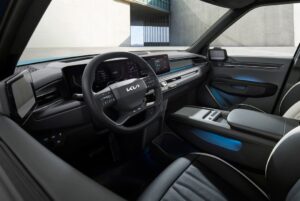
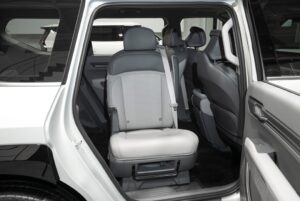
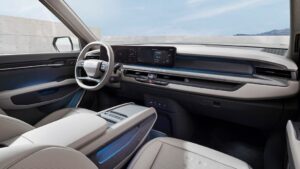
The EV9 is available as a six- or seven-seat version in the UK, and the second row does most of the heavy lifting. In six-seat mode, captain-style chairs are able to swivel rearward 180 degrees and be horizontally offset in relation to the forward-facing third row, so all passengers can find a place to put their legs without clashing kneecaps. Those second-row seats can also be fixed perpendicular to the rear-door opening to aid frail folks’ exit and entry and there’s a large centre console between the two front seats with a small tray that can extend rearward to place drinks, phones and more.
Marilia Bill, head of the colour, material and finish design team, says the EV9 marks the start of Kia’s phasing out of leather upholstery across its entire range, for example, adding that the brand will ‘increase the amount of plant-based components and, in the future, we plan to go further. We’re investing in something called biofabrication in order to be part of a material revolution by growing our own materials.’
Are there any tech specs you can tell me?
The EV9 runs on Hyundai Motor Group’s e-GMP platform – the architecture that underpins the EV6, as well as Hyundai’s Ioniq 5 and 6. The platform runs an 800-volt architecture for faster charging, and allows for rear- and all-wheel drive versions.
With the EV9, the standard range car has a 76.1kWh battery pack and rear-wheel drive and a ‘Long Range’ model available with rear- or all-wheel drive has a 99.8kWh pack. The thriftiest EV9 is capable of around 336 miles of e-range, while the quickest GT Line model is capable of a 5.3sec 0-62mph time. Kia’s top management also confirmed there would be an EV9 GT – likely using a similar power output to the EV6 GT – arriving in early 2025. On top of that, the EV9 can be had (in certain markets) with a remote parallel parking assistant, a platform for new software to be installed over-the-air, a 2500kg towing capacity (matching that of a Range Rover Velar), the ability to power your home (like Ford’s F-150 Lightning) and even vehicle-to-grid power supplementation. Kia also promises Level 3 autonomous technology on board.
When can I buy a Kia EV9?
Kia says it’ll go on sale towards the end of 2023 in the UK, but we’ll have to hang on a little while for pricing and specifications. That said, we expect the EV9 to command a premium price to reflect its size, battery and tech on board – likely from around £65,000/$80,000.
We will know more in time, stay tuned.
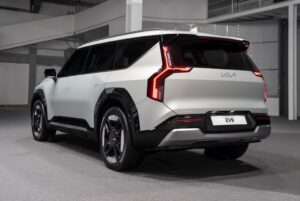
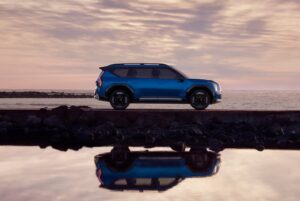
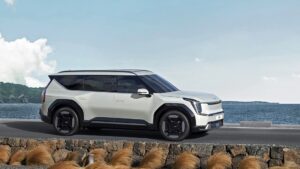
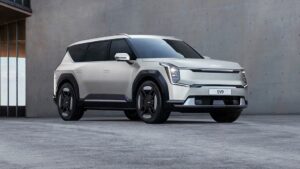



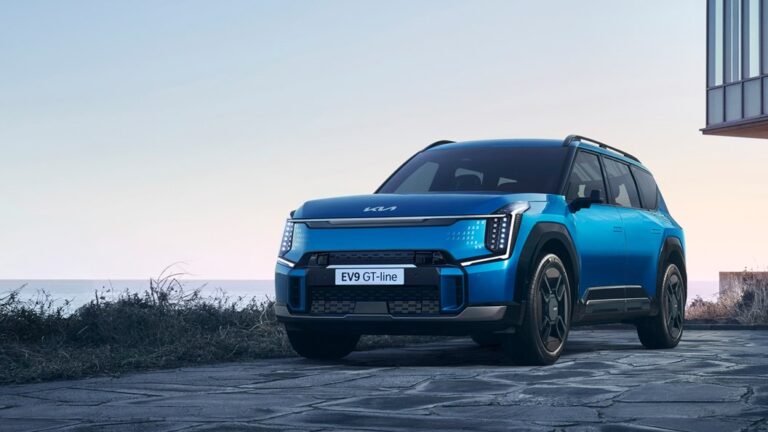
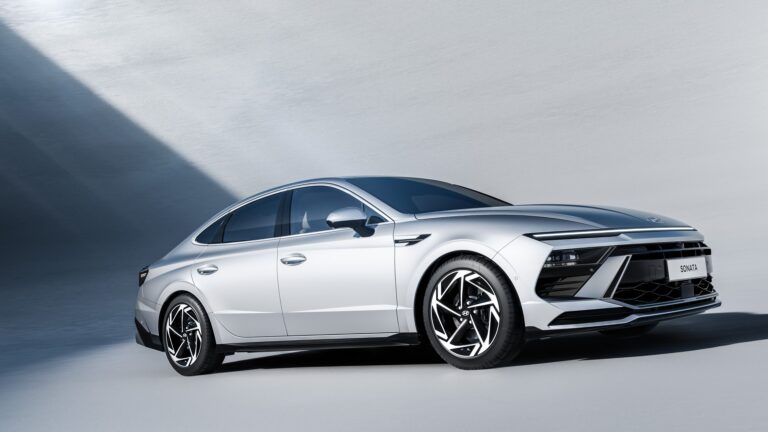
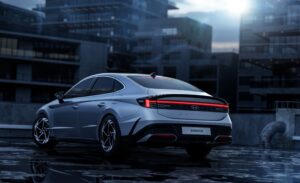 The full-width LED light strip stretching across the front is immediately noticeable, and the grille and headlights are reshaped. Out back, the taillights incorporate a similar light strip and the lower fascia looks more aggressive than before. Hyundai showed both the standard car and the sportier N Line model, and both have new wheel designs as well. The changes inside center around two large 12.3-inch screens that are now housed in a single curved display binnacle. Certain dashboard components such as the climate controls are also rearranged, and the materials appear to be an upgrade compared with before. The steering wheel is also new, and the gearshift is relocated to the steering column to free up space in the center console.
The full-width LED light strip stretching across the front is immediately noticeable, and the grille and headlights are reshaped. Out back, the taillights incorporate a similar light strip and the lower fascia looks more aggressive than before. Hyundai showed both the standard car and the sportier N Line model, and both have new wheel designs as well. The changes inside center around two large 12.3-inch screens that are now housed in a single curved display binnacle. Certain dashboard components such as the climate controls are also rearranged, and the materials appear to be an upgrade compared with before. The steering wheel is also new, and the gearshift is relocated to the steering column to free up space in the center console.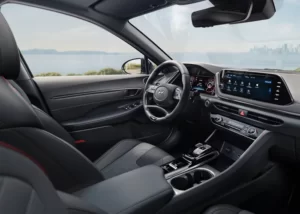
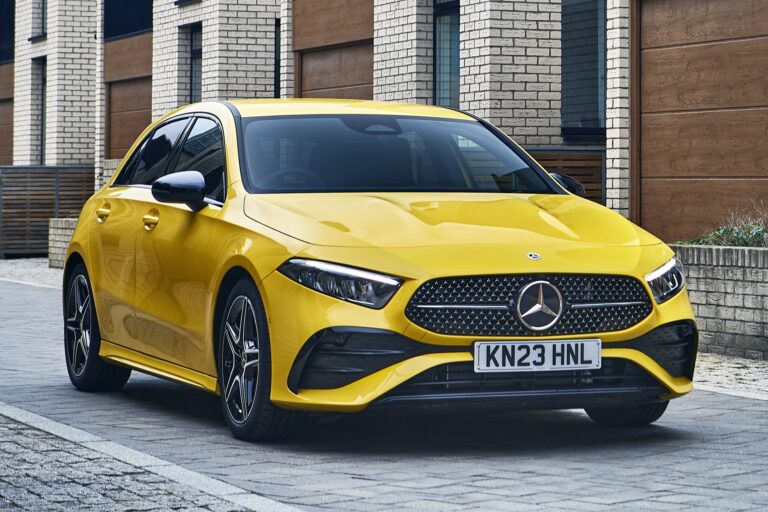
 The market for premium hatchbacks is toughly fought, and Mercedes doesn’t really help itself out either. While its A-Class hatchback remains a popular option, it’s not short of internal competition. Customers wanting an SUV can opt for the GLA SUV, while for those who want something more traditional there’s the A-Class Saloon. More space required? The GLB has seven seats and rides on the same platform. Or, for maximum glamour, there’s the CLA four-door coupe and CLA Shooting Brake.
The market for premium hatchbacks is toughly fought, and Mercedes doesn’t really help itself out either. While its A-Class hatchback remains a popular option, it’s not short of internal competition. Customers wanting an SUV can opt for the GLA SUV, while for those who want something more traditional there’s the A-Class Saloon. More space required? The GLB has seven seats and rides on the same platform. Or, for maximum glamour, there’s the CLA four-door coupe and CLA Shooting Brake. Here you’ll find the 2023 facelift’s biggest changes. The infotainment system has been updated to the latest MBUX system, and Mercedes has followed BMW and Audi’s lead in making the infotainment touchscreen-only, removing the previous central touchpad.
Here you’ll find the 2023 facelift’s biggest changes. The infotainment system has been updated to the latest MBUX system, and Mercedes has followed BMW and Audi’s lead in making the infotainment touchscreen-only, removing the previous central touchpad.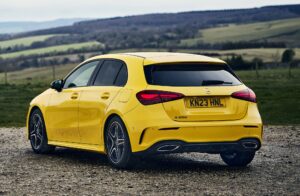 There are no surprises here, except perhaps how mild the A-Class’s mid-life facelift is. Why fix what isn’t broken, we suppose – it still sells exceptionally well.
There are no surprises here, except perhaps how mild the A-Class’s mid-life facelift is. Why fix what isn’t broken, we suppose – it still sells exceptionally well.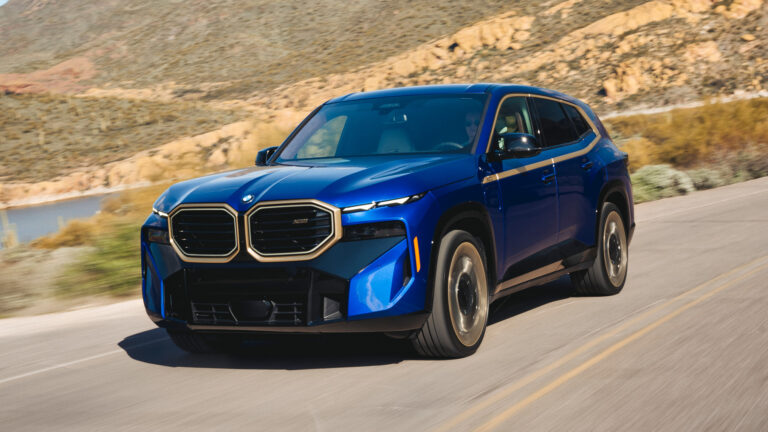
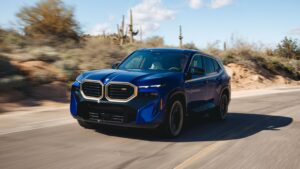 In contrast to many rivals, this BMW does without air springs, carbon-ceramic brakes and active aerodynamics. Instead, the CTO Dirk Häcker and his team opted for steel springs, adaptive dampers, adjustable anti-roll bars, four-wheel steering and extra-wide tyres measuring up to 23in in diameter.
In contrast to many rivals, this BMW does without air springs, carbon-ceramic brakes and active aerodynamics. Instead, the CTO Dirk Häcker and his team opted for steel springs, adaptive dampers, adjustable anti-roll bars, four-wheel steering and extra-wide tyres measuring up to 23in in diameter.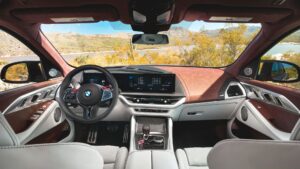 The XM treats driver and passenger with the usual chrome, leather and piano black razzmatazz, but the dominating features are the tall, curved trademark display which stretches across two thirds of the facia, and the radically cleaned up centre console.
The XM treats driver and passenger with the usual chrome, leather and piano black razzmatazz, but the dominating features are the tall, curved trademark display which stretches across two thirds of the facia, and the radically cleaned up centre console.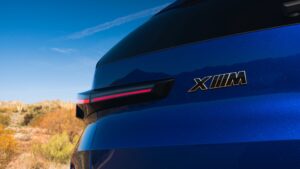 The M boys also believe EVs are the future, but since their four-motor 1MW battery-powered supercar is still at least five years away, they must plug the gap by beating the drum for their brawny PHEV offering; which is much more than a stopgap solution. But is it?
The M boys also believe EVs are the future, but since their four-motor 1MW battery-powered supercar is still at least five years away, they must plug the gap by beating the drum for their brawny PHEV offering; which is much more than a stopgap solution. But is it?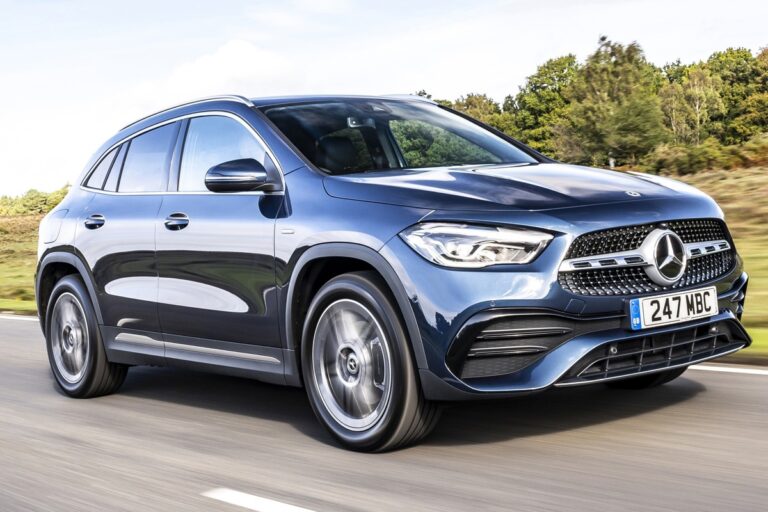
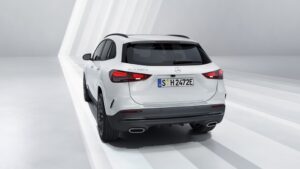 The company says that the new Mercedes-Benz GLA benefits from updates such as revised front- and rear-end design features and the latest version of its MBUX infotainment system. New mild hybrid technology has also been introduced, and improvements have been made to the plug-in hybrid model.
The company says that the new Mercedes-Benz GLA benefits from updates such as revised front- and rear-end design features and the latest version of its MBUX infotainment system. New mild hybrid technology has also been introduced, and improvements have been made to the plug-in hybrid model.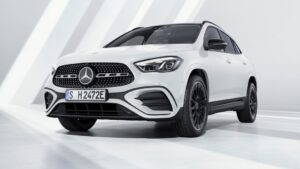
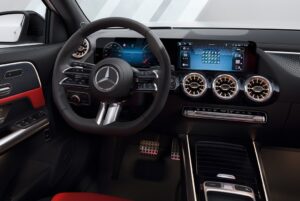
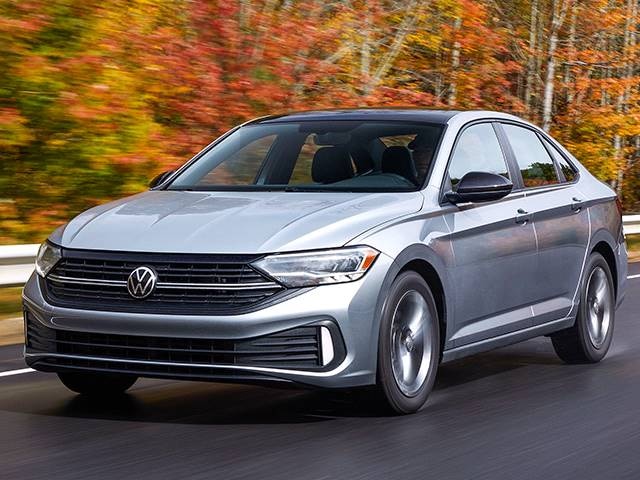
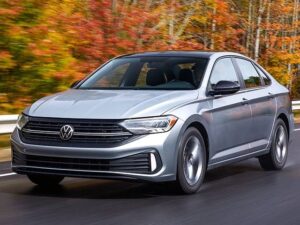 While the Volkswagen Jetta received a refresh last year, 2023 brings only minor cosmetic changes as well as the addition of remote start ignition capability for the SE trim level. The Sport trim level strikes us as the Jetta to get, with a host of unique design elements and a price tag that’s not too steep. The Sport’s standard equipment includes unique 17-inch wheels, black exterior and interior accents, and an electronically locking front differential for improved performance versus the rest of the lineup.
While the Volkswagen Jetta received a refresh last year, 2023 brings only minor cosmetic changes as well as the addition of remote start ignition capability for the SE trim level. The Sport trim level strikes us as the Jetta to get, with a host of unique design elements and a price tag that’s not too steep. The Sport’s standard equipment includes unique 17-inch wheels, black exterior and interior accents, and an electronically locking front differential for improved performance versus the rest of the lineup.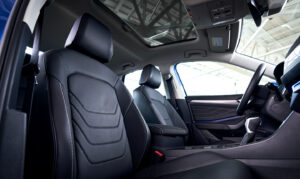 Inside, the Jetta provides a sophisticated design and generous passenger space. Although the available features become more desirable with each higher trim, every cabin caters to the driver and boasts excellent outward visibility. Top content such as customizable ambient interior lighting, wireless device charging, and ventilated front seats are reserved for the most expensive models. Surprisingly, the Jetta held more carry-on bags than the regular Golf hatchback. The sedan held seven bags in its trunk, compared with the five that fit behind the Golf’s rear seat. Likewise, the Jetta held three extra bags more than the Golf (18 total) with the back seats folded. The Jetta’s interior cubby storage includes useful door pockets and a deep center-console bin.
Inside, the Jetta provides a sophisticated design and generous passenger space. Although the available features become more desirable with each higher trim, every cabin caters to the driver and boasts excellent outward visibility. Top content such as customizable ambient interior lighting, wireless device charging, and ventilated front seats are reserved for the most expensive models. Surprisingly, the Jetta held more carry-on bags than the regular Golf hatchback. The sedan held seven bags in its trunk, compared with the five that fit behind the Golf’s rear seat. Likewise, the Jetta held three extra bags more than the Golf (18 total) with the back seats folded. The Jetta’s interior cubby storage includes useful door pockets and a deep center-console bin.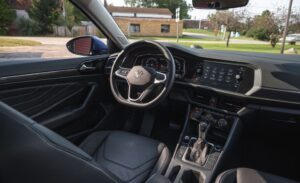 Every Jetta has a responsive touchscreen infotainment system with Apple CarPlay and Android Auto capability. Along with traditional volume and tuning knobs, the Car-Net unit allows gesture controls for swiping and pinch-to-zoom. Likewise, every Jetta has a mobile hotspot as long as people are willing to pay for a subscription-based data plan. Wireless charging is standard on the top two trim levels.
Every Jetta has a responsive touchscreen infotainment system with Apple CarPlay and Android Auto capability. Along with traditional volume and tuning knobs, the Car-Net unit allows gesture controls for swiping and pinch-to-zoom. Likewise, every Jetta has a mobile hotspot as long as people are willing to pay for a subscription-based data plan. Wireless charging is standard on the top two trim levels.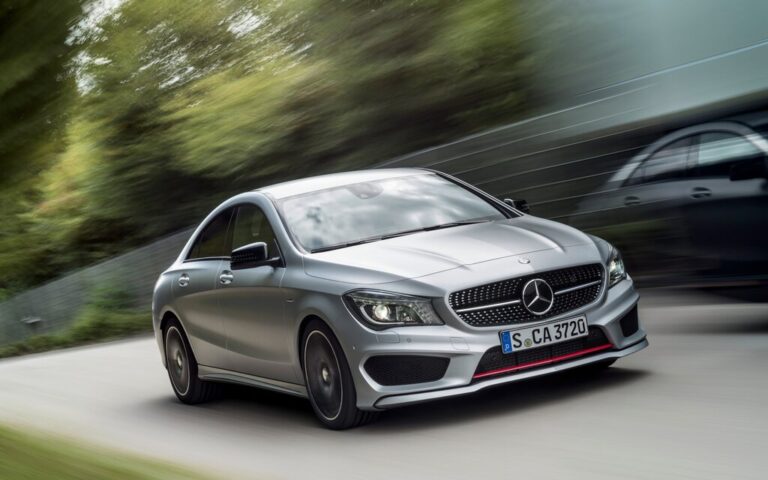
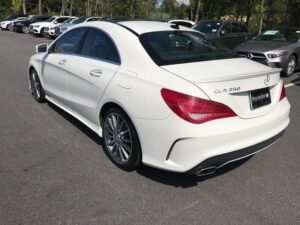 Even though the CLA starts at an attractively low base price, as you begin to specify options that are typically expected in a luxury car — like keyless entry and ignition, a rearview camera or heated seats — costs begin to add up quickly. And if you’ve had your eye on that AMG model, steady yourself to spend more than $40,000 in most major markets. however, i fancy a slightly used one would cost at most $15,000 (including taxes and shipping) for a base CLA250. Checking out the CLA’s competition, the well-sorted 2016 Audi A3 stands as our top recommendation. If you opt for the smaller 1.8-liter engine, the Audi costs marginally less than a base model CLA. With the comparable 2.0-liter engine, the Audi slides past the CLA but adds all-wheel drive as standard equipment.
Even though the CLA starts at an attractively low base price, as you begin to specify options that are typically expected in a luxury car — like keyless entry and ignition, a rearview camera or heated seats — costs begin to add up quickly. And if you’ve had your eye on that AMG model, steady yourself to spend more than $40,000 in most major markets. however, i fancy a slightly used one would cost at most $15,000 (including taxes and shipping) for a base CLA250. Checking out the CLA’s competition, the well-sorted 2016 Audi A3 stands as our top recommendation. If you opt for the smaller 1.8-liter engine, the Audi costs marginally less than a base model CLA. With the comparable 2.0-liter engine, the Audi slides past the CLA but adds all-wheel drive as standard equipment.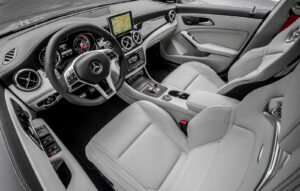 One of the interior’s weak spots is the central display screen, which looks like an aftermarket addition that’s been bolted to the dash. It’s part of the COMAND electronics interface, which has been updated with the latest software introduced in newer models like the C- and S-Class, but it lacks the new touchpad that goes along with those cars. Frankly, we haven’t found the touchpad especially useful. The remaining buttons and knob get the job done, but this latest system update does seem to be a bit more confusing than its predecessor. It also takes some time to get used to selecting gears with a column-mounted stalk rather than a traditional console shifter.
One of the interior’s weak spots is the central display screen, which looks like an aftermarket addition that’s been bolted to the dash. It’s part of the COMAND electronics interface, which has been updated with the latest software introduced in newer models like the C- and S-Class, but it lacks the new touchpad that goes along with those cars. Frankly, we haven’t found the touchpad especially useful. The remaining buttons and knob get the job done, but this latest system update does seem to be a bit more confusing than its predecessor. It also takes some time to get used to selecting gears with a column-mounted stalk rather than a traditional console shifter.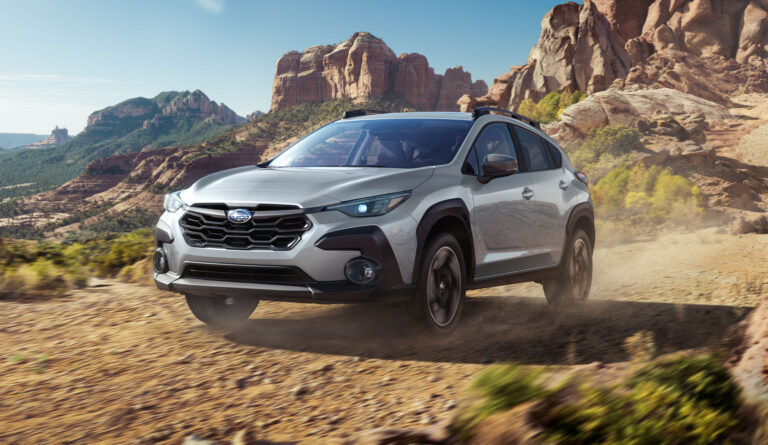
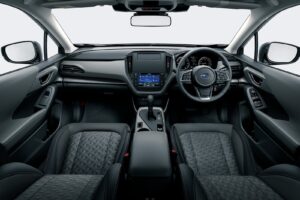 Every Crosstrek is outfitted with the same dual-pinion electric power steering rack as found on the current WRX, and there’s a liveliness you can tell descends from Subaru’s AWD sports car. Zipping around Joshua Tree and especially traversing its dirt and gravel trails, we found the Crosstrek to be confident and composed, with nicely controlled body motions on unpaved roads mostly meant for trucks and other four-wheel-drive hardware.
Every Crosstrek is outfitted with the same dual-pinion electric power steering rack as found on the current WRX, and there’s a liveliness you can tell descends from Subaru’s AWD sports car. Zipping around Joshua Tree and especially traversing its dirt and gravel trails, we found the Crosstrek to be confident and composed, with nicely controlled body motions on unpaved roads mostly meant for trucks and other four-wheel-drive hardware.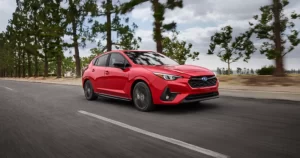 Responding to customer interest, roof rails are standard on all trims except the base model. They can carry up to 176 pounds when the SUV is moving or up to 700 when parked, enough for that rooftop tent and at least a couple of glampers … er, campers.
Responding to customer interest, roof rails are standard on all trims except the base model. They can carry up to 176 pounds when the SUV is moving or up to 700 when parked, enough for that rooftop tent and at least a couple of glampers … er, campers.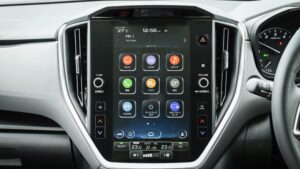 Inside the 2024 Crosstrek, digital real estate has grown, too. The dual-screen setup on the base trim is back but now employs 7.0-inch screens instead of 6.5-inch ones. You’ll want the upgrade, though, an 11.6-inch portrait-oriented infotainment touchscreen—3.6 inches bigger than the last one—with wireless Apple CarPlay and Android Auto.
Inside the 2024 Crosstrek, digital real estate has grown, too. The dual-screen setup on the base trim is back but now employs 7.0-inch screens instead of 6.5-inch ones. You’ll want the upgrade, though, an 11.6-inch portrait-oriented infotainment touchscreen—3.6 inches bigger than the last one—with wireless Apple CarPlay and Android Auto.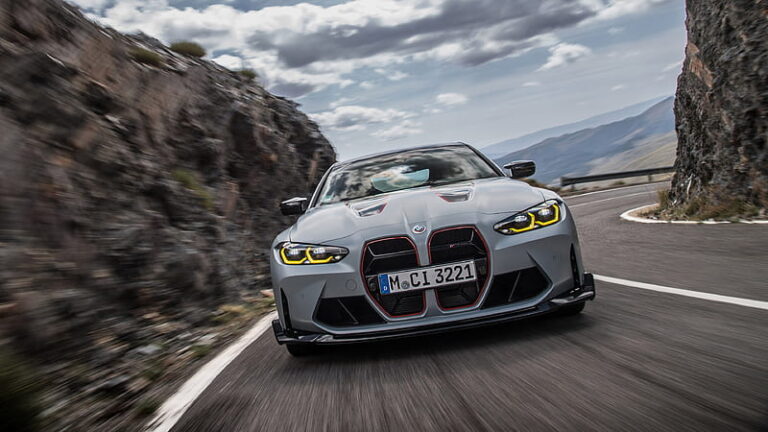
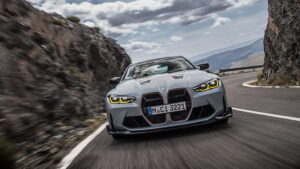 The Cup 2 R tires utterly bolt down the CSL to the tune of 1.10 g’s around the skidpad. But the Bimmer’s 148-foot stop from 70 mph is only two feet better than what the M4 Competition xDrive managed. From 100 mph, however, the CSL’s 278-foot stop bests the xDrive’s by a full 24 feet. Put all of that together and it’s no wonder this bad boy clocked a 2:47.5 at Lightning Lap (where the dash to 60 mph means little) to become the quickest BMW around the place.
The Cup 2 R tires utterly bolt down the CSL to the tune of 1.10 g’s around the skidpad. But the Bimmer’s 148-foot stop from 70 mph is only two feet better than what the M4 Competition xDrive managed. From 100 mph, however, the CSL’s 278-foot stop bests the xDrive’s by a full 24 feet. Put all of that together and it’s no wonder this bad boy clocked a 2:47.5 at Lightning Lap (where the dash to 60 mph means little) to become the quickest BMW around the place.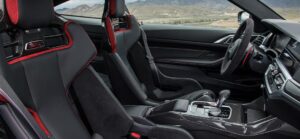
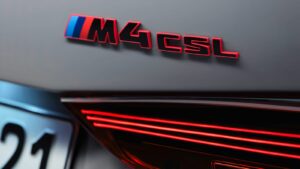
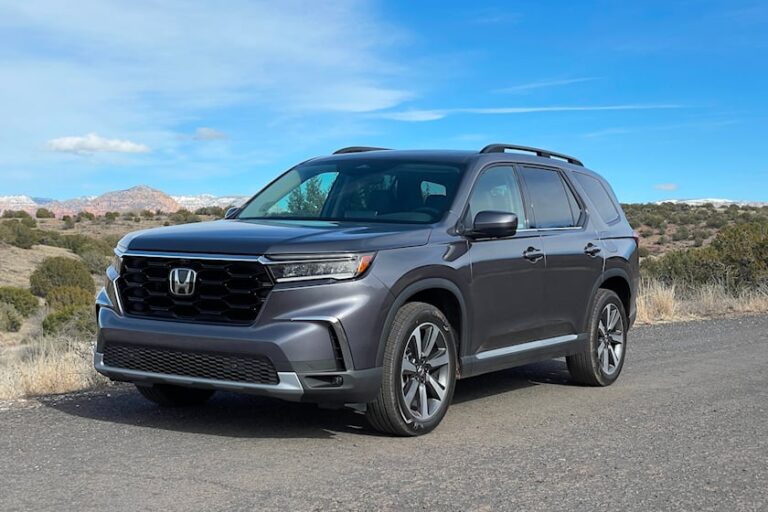
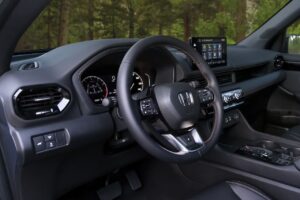 The Pilot is stocked with adventure-enhancing amenities and modern technology like available wireless Apple CarPlay® 2 and Android Auto™3 compatibility, configurable displays, and peace-of-mind features that make life on the road more comfortable, connected, and enjoyable all around. An all-new available Multi-View Camera System4 uses cameras mounted at the front, sides, and rear of the Pilot to provide you with views around the entire vehicle.
The Pilot is stocked with adventure-enhancing amenities and modern technology like available wireless Apple CarPlay® 2 and Android Auto™3 compatibility, configurable displays, and peace-of-mind features that make life on the road more comfortable, connected, and enjoyable all around. An all-new available Multi-View Camera System4 uses cameras mounted at the front, sides, and rear of the Pilot to provide you with views around the entire vehicle.